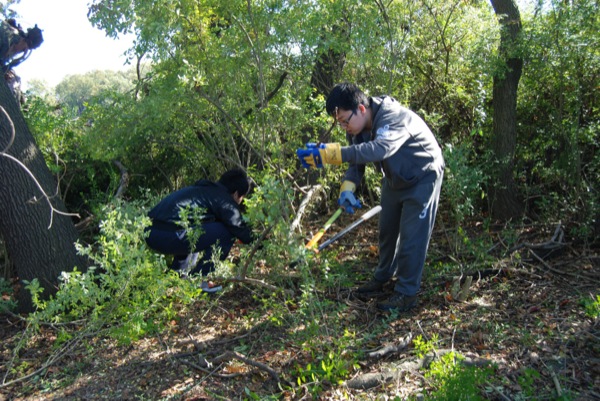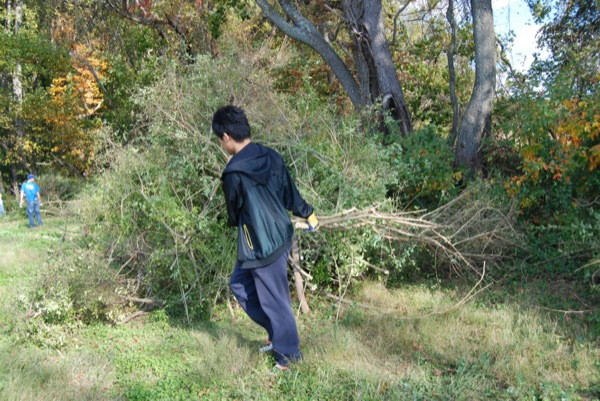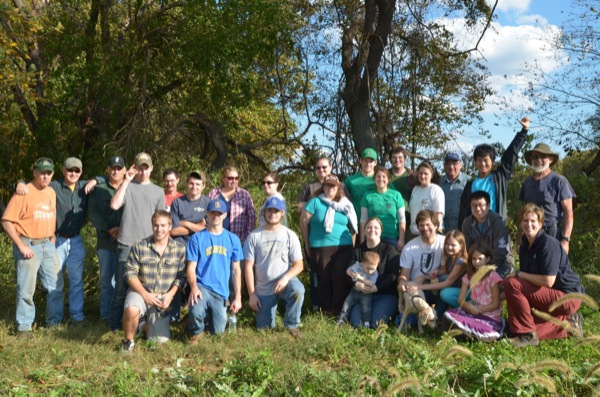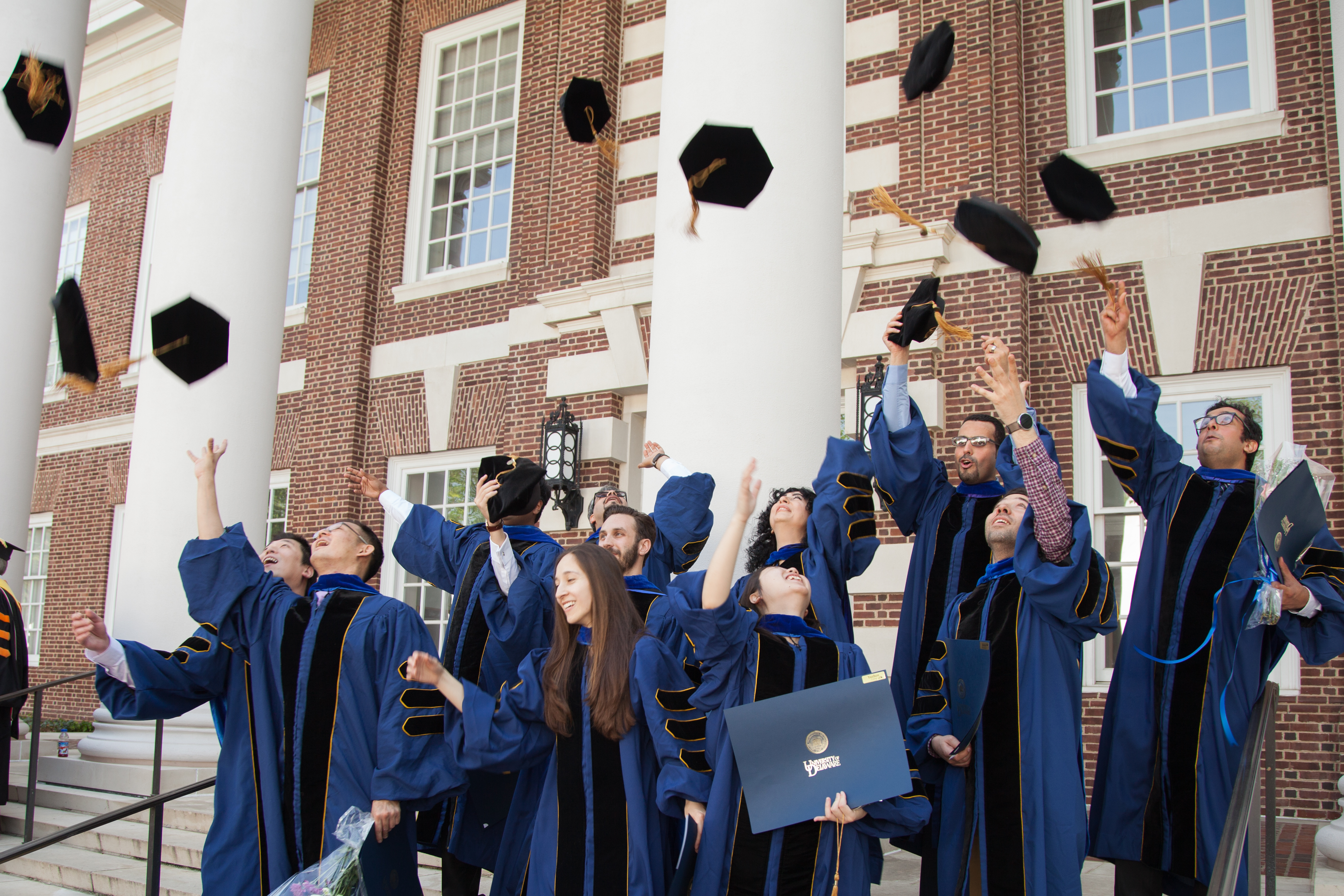


Invasive species
Fooks, students help remove privet from Sharp Farm near Odessa
8:36 a.m., Dec. 10, 2012--University of Delaware instructor Jacob Fooks wanted students in his Department of Applied Economics and Statistics sustainable development class to experience things beyond the classroom, so when the opportunity arose to assist Delaware Wild Lands, a non-profit land conservancy, with an invasive species removal project, he jumped at the opportunity.
The UD students were assigned to work on a project at Delaware Wild Lands’ Sharp Farm near Odessa, said Fooks, who is a doctoral student in UD’s Alfred Lerner College of Business and Economics.
Campus Stories
From graduates, faculty
Doctoral hooding
The Sharp Farm provides a great learning experience for those unfamiliar with invasive species and their impacts on the ecosystem because such plants are prolific throughout the understories in the forested areas of the 430-acre property.
The farm -- owned for many years by the Sharp family, longtime UD benefactors, until its acquisition in 2006 by Delaware Wild Lands -- sits within two critical geographic transition zones in Delaware.
“One of the really wonderful things about the Sharp Farm is that is provides exceptionally diverse habitat because it’s right in the middle of two transition zones,” said Kate Hackett, Delaware Wild Lands executive director. “The Sharp Farm lies within the southern extent of the piedmont region and the northern extent of the coastal plain region, so you get both of those regions there and all of the associated plants and animals associated with those two different eco regions.”
While there are many invasive species present on the farm -- Japanese honeysuckle, wineberry, multiflora rose and Japanese stiltgrass, to name a few -- Fooks and his students spent their time at the farm removing privet.
The problem with privet and other invasive species, Hackett explained, is that it grows faster than the native plants with which it competes for space, lights and nutrients. “If you have a little seedling of privet regenerating at the same time you have an acorn from an oak tree, the privet just grows faster and will crowd out the oak tree,” said Hackett. “So we need to control invasive species and make sure that the oak trees can naturally regenerate faster.”
Hackett, who had spoken to the class about sustainability issues before inviting them to help with the invasive species removal on the farm, said that when Fooks and his students arrived at the farm, they were tasked with removing an eight-foot wall of privet.
“We were working on these hedgerows along the edges of this field that was overgrown with underbrush,” said Fooks. “At the end there was a massive pile of all this brush that we hauled out, so it was pretty cool.”
Hackett recalls, “Jacob and his students -- and we had some community members, also -- literally just came in and mowed over all of the privet. We actually got much farther than we expected that day and that’s in large part because of the students, so they really helped us significantly advance our goals of removing invasive species and ultimately of restoring and enhancing forests at the Sharp Farm.”
The work was funded, in part, by a wildlife grant from the state of Delaware. In addition to invasive species removal, and also part of the grant, Delaware Wild Lands is also exploring the use of deer exclosures to prevent overbrowsing from deer.
Fooks said that he had a great time helping out at the Sharp Farm. “It was a great experience for the students, it was a lot of fun for me and I think they got a lot out of it, too.”
Hackett reflected on the day, saying she was thrilled to have Fooks and his students show up to help with the project. “Jacob’s students showed up ready to work and learn. For anyone, it’s difficult to understand how invasive species can adversely affect the environment. Jacob’s student’s advanced us significantly towards our goal while learning more about the multitude of factors that can and do affect an ecosystem.”
Article by Adam Thomas










